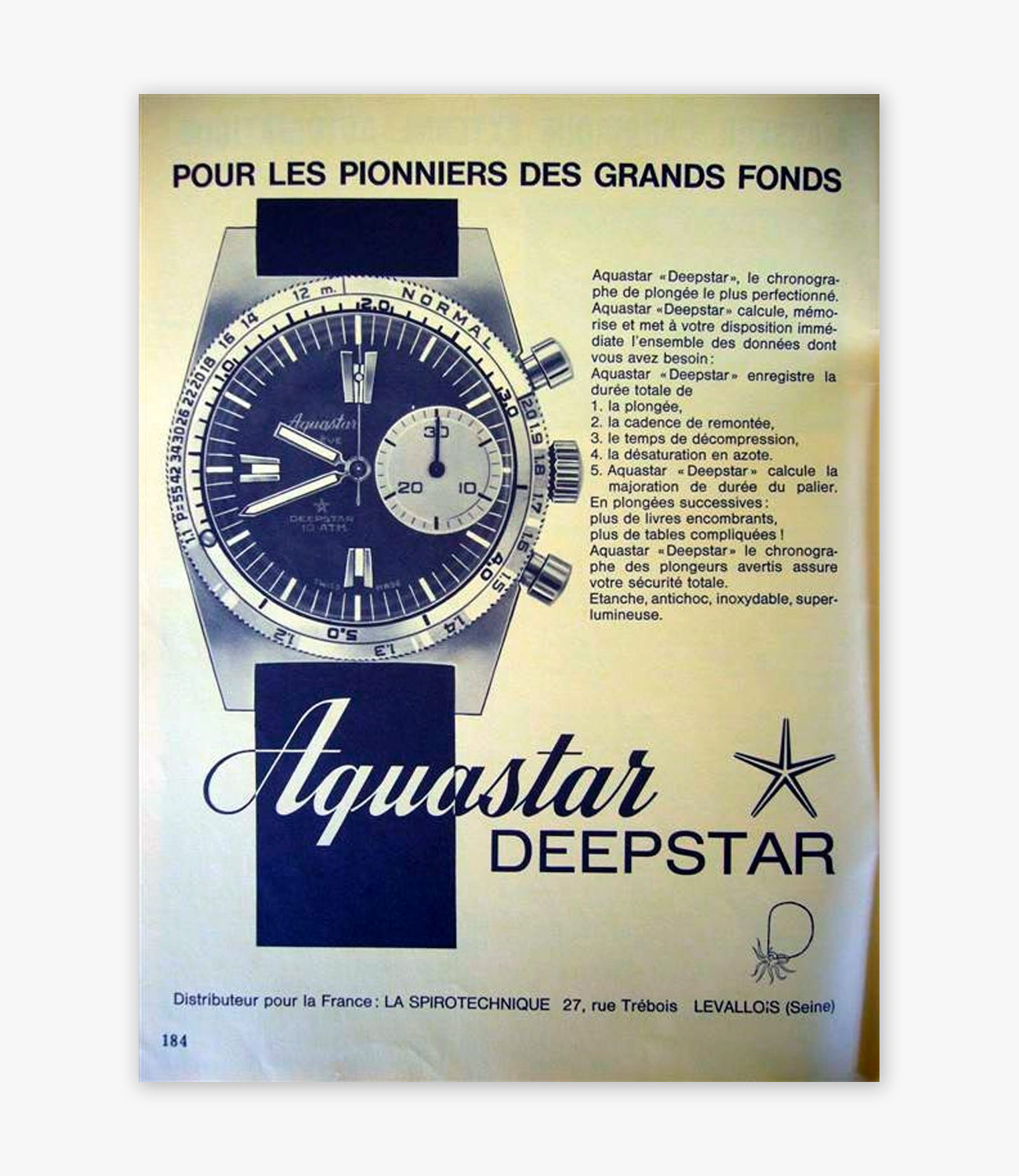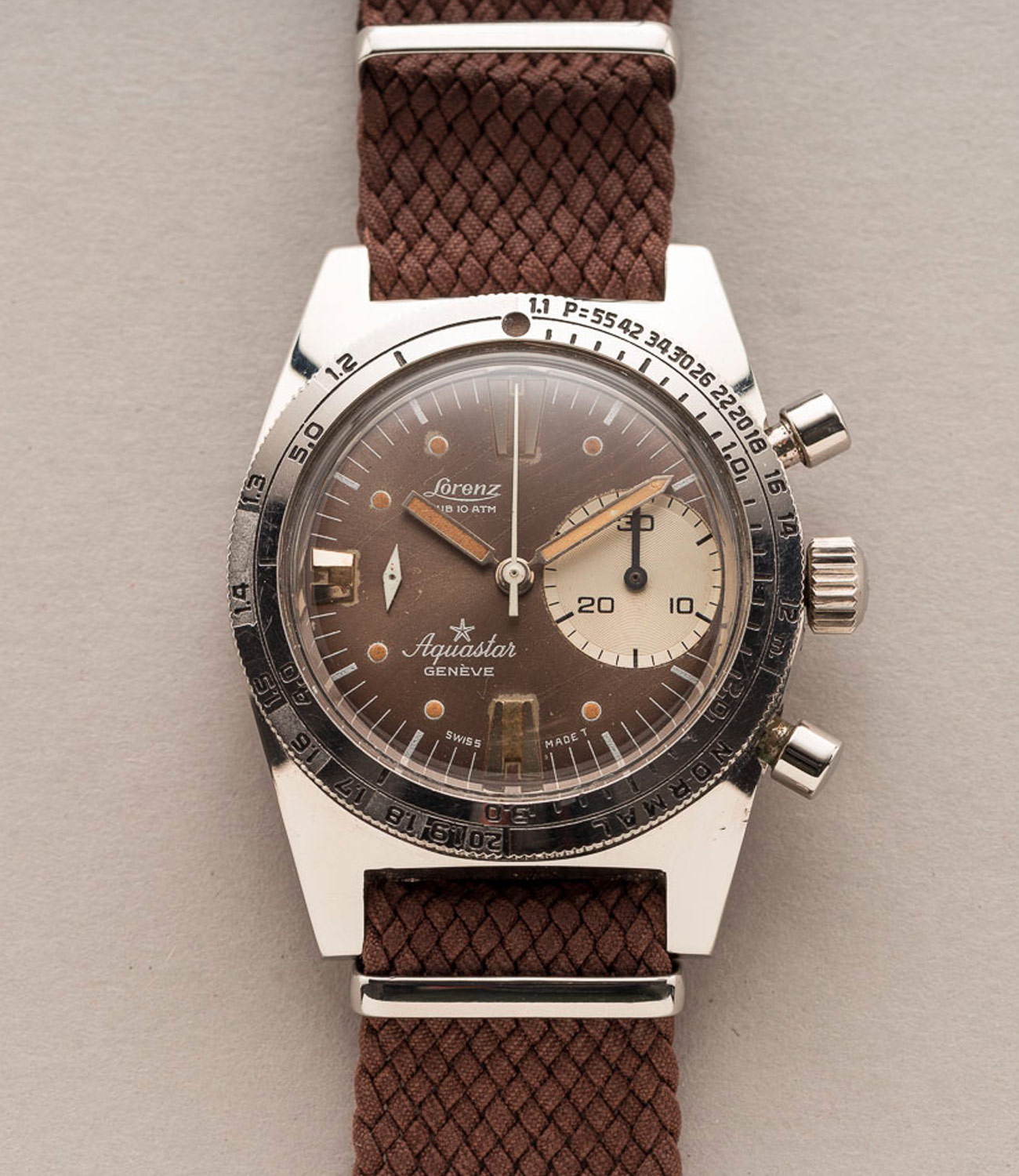Welcome to “Watches You Should Know,” a new bi-weekly (the once-every-two-weeks kind) column highlighting little-known watches new and old that have interesting stories or have had a surprising impact on the industry.
The Submariner and Seamaster may be the undisputed kings of the dive watch realm, but there are other, lesser known timepieces that are arguably cooler, and the watch world seems to finally be catching on.

Photo: Watch Pro Site member alain2701
Perhaps the funkiest of these vintage divers is actually a chronograph produced in the 1960s called the Deepstar, produced by a company called Aquastar (we know, we know — lots of “stars”). Aquastar was founded in 1962 by Frédéric Robert, a longtime SCUBA diver. JeanRichard, Squastar’s parent company, filed a patent in 1958 for a design that would become the brand’s first dive watch, called the Aquastar 60. Retailed under several names, depending on the market, the Aquastar line became so successful that its popularity eclipsed that of the other sub-brands.
Though Aquastar designed and built numerous timepieces, it was the Deepstar that is perhaps most interesting, and in no small part because it is a chronograph. The watch features a roughly 38mm-wide stainless steel case (not including crown or pushers) and a 20mm lug width. It’s powered by a Valjoux 23 manually winding movement driving its signature sub-dials: a running seconds hand at 9 o’clock that floats freely without any actual sub-dial behind it, and an oversize “big eye” 30-minute totalizer at 3 o’clock for recording elapsed minutes.

Photo: Shuck the Oyster
The case is the standard “skin diver” variety, water-resistant to 100m, but the combination of the chronograph pushers, the unusual dial arrangement and a rather complicated diving bezel gives the watch a unique, beautiful look. It certainly helps that professional divers such as Jaques Cousteau appreciated the practical benefits of the chronograph, the first of its kind in a dive watch. Cousteau and his crew, who were associated with numerous dive watches during Cousteau’s long career, began an association with Aquastar in 1965 that continues for nearly a decade.
The propensity of Deepstar dials to turn absolutely wild shades of brown and tan over the years, and the fact that good examples don’t surface terribly often, has only added to their popularity recently, with prices sometimes reaching north of $10,000 for a working, undamaged model. So while these watches may be difficult to come by and not nearly as iconic or as common as, say, the Rolex Submariner, they represent a time of true innovation in the watch world, where an enterprising company would listen to the requests of real-world professionals and turn out a product meant to do a specific job, and to do it well.

